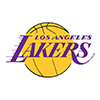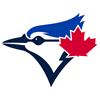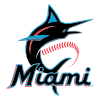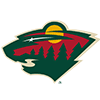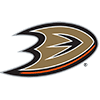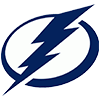Here we go on Year 4 of Hutch's Hockey. While I have plenty of issues with the way the NHL operates its schedule for the first week of the season, I won't sully the moment or the excitement that comes from being on the eve of Opening Night. This is the time when hope springs eternal, and (nearly) every team is even in the standings.
Before jumping into my x-factors on each team, I want to explain my drafting strategy for this season. After one year of doing way too many leagues, I've scaled back this year. I'm stuck with a couple of six-team leagues, and I'm also in a couple of 14-team pools, but a plurality have 10 teams. Fueling that was the switch of the standard public Yahoo formats from 12 to 10 teams. I haven't played public leagues before -- I like more category variation and a deeper bench -- but I caved this year to find more early drafts.
From a strategy standpoint, I took a large step back from early goalies and tandems. There's only one tandem I have any particular interest in (Carolina), but Frederik Andersen and Pyotr Kochetkov were typically going too close together to get both of them without jeopardizing my depth at other positions. I still got my fair share of goalies early on, but it was more often one or two in the first six rounds and the rest later in the draft.
In my earlier drafts, I noticed a
Here we go on Year 4 of Hutch's Hockey. While I have plenty of issues with the way the NHL operates its schedule for the first week of the season, I won't sully the moment or the excitement that comes from being on the eve of Opening Night. This is the time when hope springs eternal, and (nearly) every team is even in the standings.
Before jumping into my x-factors on each team, I want to explain my drafting strategy for this season. After one year of doing way too many leagues, I've scaled back this year. I'm stuck with a couple of six-team leagues, and I'm also in a couple of 14-team pools, but a plurality have 10 teams. Fueling that was the switch of the standard public Yahoo formats from 12 to 10 teams. I haven't played public leagues before -- I like more category variation and a deeper bench -- but I caved this year to find more early drafts.
From a strategy standpoint, I took a large step back from early goalies and tandems. There's only one tandem I have any particular interest in (Carolina), but Frederik Andersen and Pyotr Kochetkov were typically going too close together to get both of them without jeopardizing my depth at other positions. I still got my fair share of goalies early on, but it was more often one or two in the first six rounds and the rest later in the draft.
In my earlier drafts, I noticed a big pocket of defensemen right around the middle of the draft. I liked a lot of names in that group, but it took a couple of drafts to figure out that many of them would linger over multiple rounds. One early team is absolutely loaded on the blue line, though it came at the expense of forward depth. I ended up taking fewer top-tier defensemen knowing how rich the position is later on.
Lastly, even though center is deep, I ended up filling out that position quickly in most formats. There were a couple of polar opposites, but for the most part, I had two or three centers within six rounds. A lot of the center-only options later in the draft are more than fine, but I won't be heavily invested in them this year unless they're hanging around on the waiver wire.
Two more things: a list of players I have in approximately a quarter or more of leagues, and a list of top players I didn't draft at all. With how many different formats I play in, the first list represents players with a certain level of universal appeal that I trust to have good and steady seasons. It's a little heavier on goalie and defense since a lot of my teams followed a basic script for late picks, sleepers and bounce-back candidates. The second list isn't necessarily a criticism of any of the players -- many of them are good, but either the flow of the drafts, their ranking or some other circumstance led to me not going after them. Here are the lists.
Connor McDavid, Filip Forsberg, Zach Hyman, Mitch Marner, Juuse Saros, Seth Jarvis, Connor Hellebuyck, Wyatt Johnston, Alex DeBrincat, Cole Caufield, Jacob Markstrom, Miro Heiskanen, Ukko-Pekka Luukkonen, Mike Matheson, Aaron Ekblad, Noah Hanifin, John Carlson, Adin Hill, Shayne Gostisbehere, Thomas Harley, Mikhail Sergachev and Justin Faulk are the guys I targeted heavily. For the first 10 names on the list, they are either steady goalies or likely to have good power-play years. That was the primary focus for the later defensemen as well -- power-play production with passable all-around numbers. Aside from Gostisbehere, all should also be top-four options. Luukkonen and Hill were my preferred No. 3 goalies generally, though an honorable mention is due to Darcy Kuemper, who just missed the cut here by one draft.
On the flip side, I don't have any shares of Sam Reinhart, Robert Thomas, Carter Verhaeghe, Brad Marchand, Elias Lindholm, Vincent Trocheck, Jeremy Swayman, Brock Nelson, Jeff Skinner, Frank Vatrano, Jonathan Marchessault, Alexis Lafreniere, Nikolaj Ehlers, Mats Zuccarello, Gabriel Landeskog, Macklin Celebrini, Sam Bennett, Trevor Moore, Anze Kopitar or Brent Burns. A quick glance would suggest I don't like the Panthers past or present, but again, this is mostly just out of draft flow. In most cases, I liked someone else better at these players' draft slots. I intentionally avoided Reinhart, Marchand, Swayman, Zuccarello, Landeskog and Burns for various concerns. Mainly, injuries, age, regression or some combination of the three, though Swayman's holdout was also a point of caution for me -- I don't like to load up on players that missed most or all of camp.
Now, with the season so close, here's one player from each team I'm keeping an eye on, regardless of whether I drafted them a lot, a little or somewhere in between.
Anaheim: Leo Carlsson. The workload management plan for Carlsson last year made sense. The team can't control injuries, but it was an interesting approach to integrate a rookie into the NHL. The kid gloves came off after the All-Star break last year, and I want to see how he looks over a full season. I'm giving the Ducks more credit than most -- I think they'll be a surprising team if not a playoff competitor.
Boston: Jeremy Swayman. The holdout ended Sunday -- turns out, Swayman has 66 million reasons to play now. There's room for caution here, as outlined above. Swayman will be a true No. 1 goalie for the first time in his career, but his holdout cost him all of training camp. Don't be surprised if his save percentage is under .910, but the increased workload could give him a chance for 30-35 wins. I'll skip him this year and welcome him back with open arms for 2025-26.
Buffalo: John-Jason Peterka. I liked Peterka as a depth winger in drafts, but I didn't go after him exclusively. Now, he's sustained a concussion during the NHL Global Series in Prague. It's not a good start to the year, but as long as his absence is minimal, I think he'll have the time to surpass the 50-point campaign he put up last year.
Calgary: Dustin Wolf. Full disclosure -- I don't think the Flames will be good this year. They will need a lot of young players to step up to prove that line of thought wrong. Wolf will be among the most important as he tries to establish himself in the NHL. An undersized goalie, Wolf has an excellent track record in junior hockey and the AHL. In a couple of years, I wouldn't be surprised if he's a perennial top-10 goalie. I'll be keeping an eye on if he can accelerate the Flames' rebuild by reaching that level in 2024-25 under less-than-ideal circumstances.
Carolina: Seth Jarvis. In fantasy drafts, Jarvis was my consistent No. 2 right-wing target if I built a center-heavy lineup early. After 33 goals and 67 points last season as a 21-year-old for most of the campaign, I think Jarvis is one of the least-talked-about future superstars of the NHL. With Teuvo Teravainen in Chicago, Jarvis is set for steady first-line minutes on a retooled Hurricanes team looking to stay above the pack in the Metropolitan.
Chicago: Philipp Kurashev. The Blackhawks remodeled their forward group, acquiring five wingers and welcoming back Taylor Hall from a knee injury. Where does that leave Kurashev? For now, probably a second-line center, a downgrade from his gig alongside Connor Bedard on the first line last year. There's not a lot of mobility between center and wing on this roster, but Kurashev will still be on the power play. He had 54 points last season, but this is a year where he has a chance to prove he can stand on his own.
Colorado: Gabriel Landeskog. Few people have the determination to get through what Landeskog's gone through with his injured knee over the last two years. Few players have the talent to even think about making a comeback from such a significant absence. As a fan, I don't like the Avalanche much, but I can't help rooting for Landeskog to come back healthy and find success again. He's the preseason favorite for the Masterton if he can do it.
Columbus: David Jiricek. The Blue Jackets will have a very young roster this year, and there's any number of forwards to keep an eye on. Instead, I'll watch the blueliner Jiricek, the sixth overall pick from 2022. Still just 20 years old (21 in November), he's not even guaranteed a spot in the lineup to begin the year. I think he'll end the campaign on the second pairing and second power-play unit while producing 30-plus points.
Dallas: Logan Stankoven. I love Stankoven's game. He'll be in the Calder conversation all season (spoiler alert: I don't have him winning it) and I think he'll emerge as a key figure for the Stars. That said, he's making the full-time jump up on a roster that's deep, talented and pretty much set in the top six. It'll take an injury for him to get more minutes and a bigger power-play role. Even with limited playing time, 20 goals and 50 points is a realistic baseline. Don't be surprised to see him pop up in my weekly waiver-wire looks frequently this year.
Detroit: Simon Edvinsson. Edvinsson is not a future fantasy star, but the next two or three years will likely set where his floor is. He has just four points over 25 NHL appearances across the last two years. The 21-year-old blueliner will likely see bottom-four minutes and minimal power-play time in 2024-25 with Moritz Seider and Erik Gustafsson offering the most scoring upside among the Red Wings' defensemen. Still, Edvinsson is intriguing -- if he can play at a 25-point pace, he may still have value in banger leagues.
Edmonton: Zach Hyman. I see the regression red flags here, but I think Hyman's drop won't be too bad. The Oilers' power play is a special exemption for success. I don't think Hyman replicates his 54-goal season, but he's scored 15 power-play goals in each of the last two years. I have a lot of time for an all-situations winger who plays a gritty and greasy game while also skating alongside a player who uses his hockey stick as a pen to rewrite the record books on a regular basis.
Florida: Gustav Forsling. His draft spot was too rich for my blood, but I want to see what Forsling does in 2024-25. He doesn't have a history of power-play usage -- he averaged just 34 seconds per game with the man advantage last year -- but that role is likely to grow with Brandon Montour and Oliver Ekman-Larsson out of the picture. Forsling should be a steady 40-point blueliner, and while my own fantasy interests have me pulling for Aaron Ekblad, the Panthers' blue line is a point of intrigue given the team's scoring potential.
Los Angeles: Quinton Byfield. The Kings look poised to have Byfield playing center this season after he broke out on Anze Kopitar's wing last year. In preseason play, Byfield has genuinely looked like the Kings' best player. He can be sheltered thanks to the defensive talents of Kopitar and Phillip Danault, but if Byfield can play up the middle, the Kings will have one of the most impressive center groups in the league.
Minnesota: Marc-Andre Fleury. He doesn't want a farewell tour, but that's what 2024-25 will be for one of the greatest goalies of the 21st century. Fleury doesn't have a ton of fantasy appeal at this point -- the Wild could carry three goalies this season. It'll still be worth watching a legend for the last few games of his career. He won't get past second in all-time wins, but if he can put up five shutouts, he'll be the ninth goalie in NHL history to reach 80 career shutouts.
Montreal: Juraj Slafkovsky. Now do it again. Slafkovsky broke out with 20 goals and 50 points while playing all 82 games last season. He clicked with Nick Suzuki and Cole Caufield -- the Canadiens' top line is impressive, even if the rest of the team leaves a lot to be desired. Slafkovsky is clearly talented, but I'm watching to see if he'll be a point-per-game threat or simply a reliable top-six winger.
Nashville: Thomas Novak. With 88 points over the last two years combined, Novak has emerged as a reliable second-line center for the Predators. It's up to him to keep that role, and he should -- Colton Sissons is best deployed on the third line. Novak has the best opportunity of his career ahead, flanked by Steven Stamkos and Jonathan Marchessault. The Predators were bold this offseason, and Novak could emerge as a high-end playmaker if fortune favors him and his team.
New Jersey: Stefan Noesen. After a journeyman's career and little success, Noesen produced 73 points over the last two years with the Hurricanes. He signed with the Devils in free agency, but the key here is usage. The 31-year-old winger literally cashed in because of the Hurricanes' willingness to use him as a net-front guy on the power play. If that role continues in New Jersey, especially given the team's offensive weapons, Noesen is an excellent bottom-of-the-roster guy for fantasy. He's off to a good start with a goal, a power-play assist and two hits over the first two games of 2024-25.
NY Islanders: Anthony Duclair. Bo Horvat elevated Mathew Barzal's game, and now the two of them could do the same for Duclair. The Islanders aren't fun like the Panthers, but Duclair has a chance to reach the 50-point mark for the second time in his career after doing so in 2021-22 when he had 58 points in 74 games in Florida.
NY Rangers: Artemi Panarin. The Rangers are returning a mostly unchanged roster that netted them a Presidents' Trophy and a trip to the Eastern Conference Finals. Panarin was a huge part of that success, a 49-goal and 120-point regular season being the main reason why. He slipped a bit with 15 points in 16 playoff outings. Offense is up around the league, so I wouldn't be shocked if Panarin is over the century mark again, but he'll be 33 years old for much of this season, so regression to some extent is a given.
Ottawa: Shane Pinto. Last year, Pinto was out half of the year due to a suspension for sports wagering activities. He still put up 27 points in 41 contests, representing year-over-year growth. While he's penciled in to begin 2024-25 on the third line, he's also behind the oft-injured Josh Norris on the depth chart. Pinto is the logical choice to ascend to the top six whenever the Senators are missing a key forward.
Philadelphia: Matvei Michkov. Here's the guy I think will keep Stankoven from the Calder. Michkov racked up seven points in four preseason contests, which doesn't mean a whole lot, but he hasn't looked out of place yet. The Flyers will give him every opportunity to succeed, especially because his skill set is unique on that roster. I'm usually apprehensive toward young players generally, and specifically with head coach John Tortorella, but Michkov is the kind of talent that is worth bucking the trend. A 60-point campaign would not surprise me.
Pittsburgh: Michael Bunting. He produced 19 points in 21 games after being part of the return for Jake Guentzel last season. Bunting can play, he can agitate and he can even be a power-play force. While I don't know how much Evgeni Malkin has left to give, I'm pretty confident in Bunting being able to click with him on the second line. If that doesn't work, Bunting likely goes up to Sidney Crosby's wing instead.
San Jose: Macklin Celebrini. I'm thankful to be on the West Coast, and this year, that will make it easier to see Celebrini. I'm guessing it won't always be pretty -- the Sharks don't have a lot of players to like for fantasy, and many of the older ones will be getting bumped out of the way for prospects soon. Celebrini will still be worth tuning in for, assuming he can shake off the lower-body injury that plagued him late in the preseason.
Seattle: Shane Wright. The Kraken have had a plan in place for Wright from the start. He's taken the long road to the NHL, but that's not a bad thing after he refined his overall game in the AHL last year. I don't expect him to dominate this season, but I think Wright has a 50-point season in him. He'll be a middle-six option to begin the year, and if he sticks with Eeli Tolvanen and Oliver Bjorkstrand, the Kraken could have three surprisingly effective lines.
St. Louis: Philip Broberg. The Blues' double-steal of Broberg and Dylan Holloway via offer sheets made waves in August. Of the two, Broberg has a much easier path to fantasy relevance. He's long been thought to be buried behind veterans with bad contracts in Edmonton, but that burden is gone in St. Louis. Broberg is a candidate for the second power-play unit, which could lead to him enjoying a breakout year after his change of scenery.
Tampa Bay: Jake Guentzel. It was a short stay in Carolina, but Guentzel proved he could drive play sans Crosby after getting traded away from Pittsburgh. Guentzel is a top-line lock in Tampa, where he'll likely be sharing a lot of ice with Nikita Kucherov. While Kucherov has three seasons of 40-plus goals, he's a playmaker at heart, and Guentzel is no stranger to finishing for goals. It's a recipe for success as the Lightning enter the post-Stamkos era.
Toronto: Mitch Marner. The Maple Leafs have two of their Core Four entering 2024-25 as a contract year. One is former captain John Tavares -- the fact that he's a former captain says enough. He'll either be back at a much lower price point, or he'll walk. Marner, however, is still in his prime, and he's coming off an 85-point season that was his worst in three years. He's an elite playmaker who will be cashing in sometime within the next 12 months, but getting a productive start in 2024-25 could mean he sticks in Toronto rather than going elsewhere in July.
Utah: Dylan Guenther. Signing an eight-year extension with just 78 career NHL appearances to your name will get attention. I've seen Guenther live in his junior days -- he was a big part of the Seattle Thunderbirds' most recent WHL title a couple of years ago. He's the real deal. With this Utah roster looking much improved from last year's Coyotes squad, Guenther is a legitimate 30-goal, 70-point threat. He's not being drafted heavily in fantasy, but he'll be a popular waiver pick-up.
Vancouver: Elias Pettersson. Last year was a tale of two halves for Pettersson -- the world-beating performance before the All-Star break, and then a much more mortal post-break and playoffs. He's a three-time 30-goal scorer, and he's touched the 100-point mark once. The Canucks have all the pieces to be a contender if Thatcher Demko can manage his knee injury, but Pettersson's play could range from very good to elite. I'm banking on him being the latter.
Vegas: Tomas Hertl. I love the Golden Knights' center depth, especially when both Hertl and William Karlsson are healthy. While the wingers concern me, there's always the option for the team to move Hertl there, potentially even alongside Jack Eichel. Even at his best, Hertl's ceiling is probably 70 points, but there could be room for him to squeeze out more offense now that he's away from the Sharks. I don't have him a lot yet, but I'm keeping an eye on him in October and beyond.
Washington: Alex Ovechkin. History probably isn't happening this year, but it's within the range of possibility. Ovechkin needs 42 goals to surpass Wayne Gretzky for the most in NHL history. He hit that mark in 2022-23 in just 73 games, but Ovechkin was limited to 31 tallies and an 11.4 shooting percentage in 2023-24. At 39 years old, it would be asking a lot for a bounce-back year. The Capitals also traded for a lot of talent and generally look better on paper than last year. Ovechkin might need to put the team on his back one more time -- imagine chasing the goals record late in the campaign while pushing for a playoff spot.
Winnipeg: Cole Perfetti. He was late to camp after holding out, but he signed early enough in the process that it shouldn't be an issue. Perfetti flashed talent with 38 points in 71 games last season, but the 22-year-old has more to give. He should be a top-six regular on a mostly unchanged roster from 2023-24 -- they'll be counting on improvement from within to keep pace in a crowded Central Division. Perfetti should land between 50 and 60 points this season.
With that, let the games begin. Check back here every Monday for waiver-wire advice, the occasional trade talk and general NHL trends. Good luck this year, fantasy managers!







